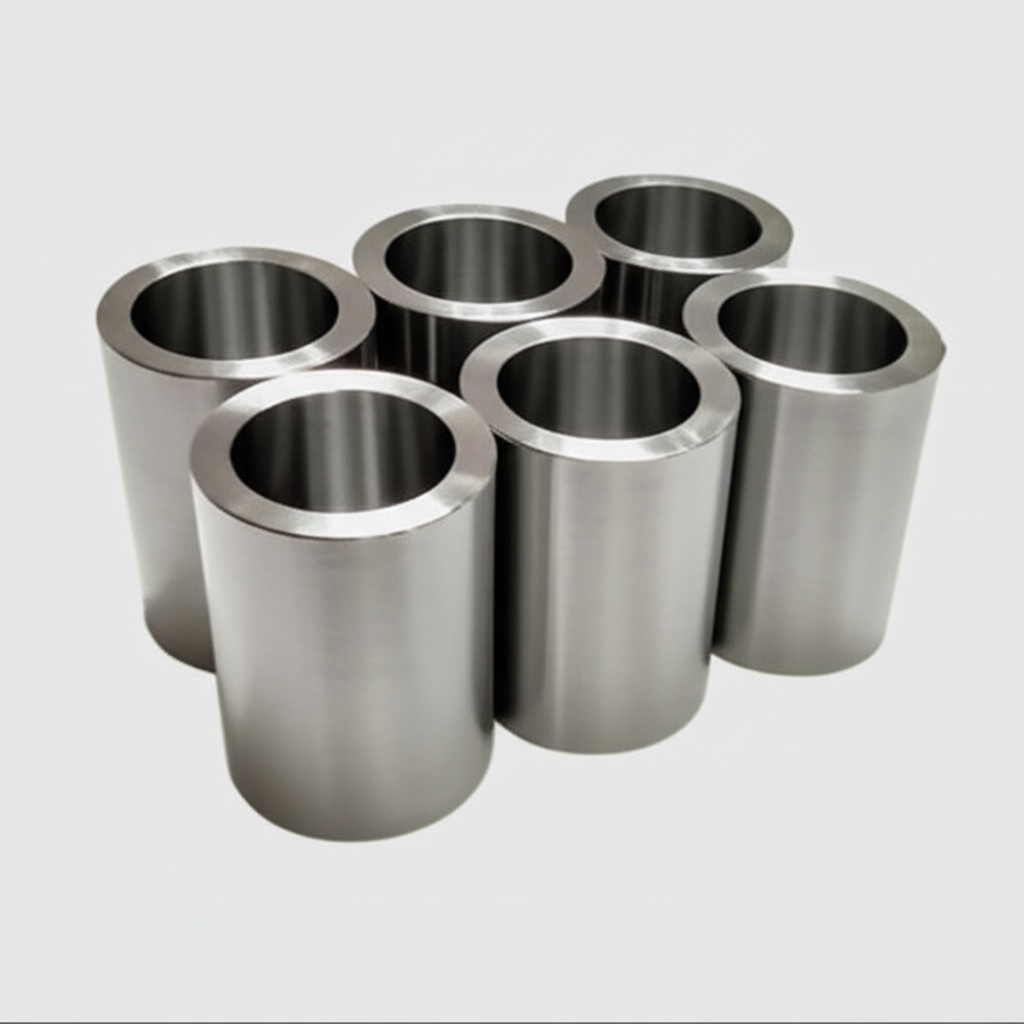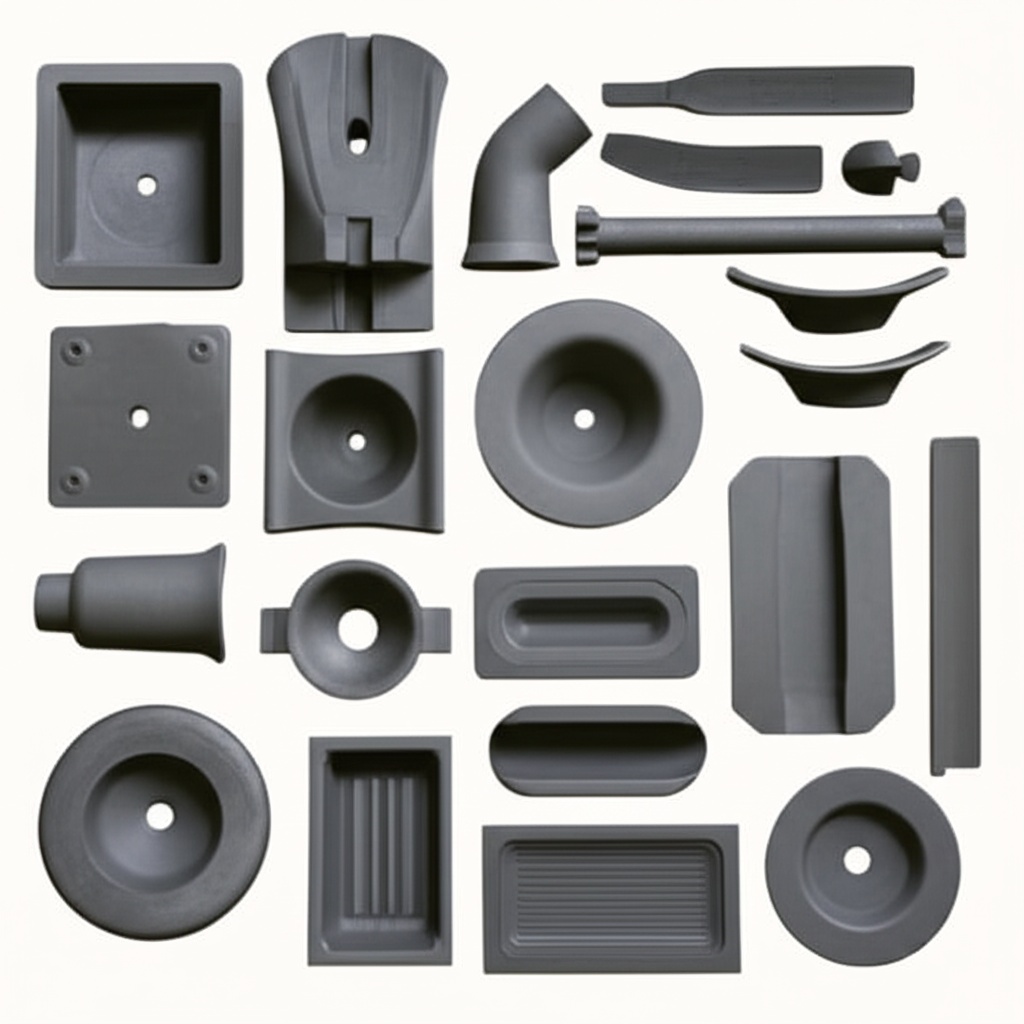SiC for Sale in Iran: A Buyer’s Guide

Share
SiC for Sale in Iran: A Buyer’s Guide
In today’s rapidly advancing industrial landscape, the demand for high-performance materials capable of withstanding extreme conditions is ever-increasing. Among these, silicon carbide (SiC) stands out as a material of choice for its exceptional properties. This guide is tailored for engineers, procurement managers, and technical buyers in Iran and beyond, looking to source high-quality custom silicon carbide products for critical applications.
What Are Custom Silicon Carbide Products?
Custom silicon carbide products are engineered ceramic components specifically designed and manufactured to meet precise application requirements. Unlike standard materials, custom SiC leverages the unique properties of silicon carbide – including its superior hardness, thermal conductivity, chemical inertness, and high-temperature strength – to deliver unparalleled performance in demanding environments. These products are essential in industries where conventional materials fall short, offering solutions for challenges related to extreme temperatures, abrasive wear, and corrosive chemicals.
Main Applications of Silicon Carbide Across Industries
Silicon carbide’s versatile properties make it indispensable across a broad spectrum of high-tech and heavy industries. Its ability to perform reliably under harsh conditions makes it a go-to material for critical components.
- Semiconductor Manufacturing: SiC wafers and components are vital for next-generation power devices, enabling higher efficiency and smaller form factors in everything from electric vehicles to consumer electronics.
- Automotive Industry: Used in power electronics for electric vehicles (EVs) and hybrid electric vehicles (HEVs), SiC improves efficiency and extends range. It also finds applications in brake discs and engine components due to its wear resistance.
- Aerospace and Defense: SiC’s lightweight nature, high strength, and thermal stability make it ideal for structural components, heat exchangers, and missile nose cones, where performance under extreme conditions is paramount.
- Power Electronics: SiC-based power modules are revolutionizing grid infrastructure, industrial motor drives, and power supplies, offering significant reductions in energy loss and operating costs.
- Renewable Energy: Essential in inverters for solar and wind power systems, SiC enhances energy conversion efficiency and reliability.
- Metallurgy and High-Temperature Processing: SiC is widely used for furnace components, kiln furniture, and refractory linings dueishing its exceptional thermal shock resistance and high-temperature strength.
- Chemical Processing: Its excellent corrosion resistance makes SiC suitable for pump components, valves, and heat exchangers handling aggressive chemicals.
- LED Manufacturing: SiC substrates are used for growing GaN layers for high-brightness LEDs, contributing to improved light output and longevity.
- Industrial Machinery: SiC components are employed in pumps, seals, and bearings in various industrial equipment, enhancing their durability and operational lifespan due to their wear resistance.
- Telecommunications: SiC’s thermal management properties are crucial for high-frequency communication devices, preventing overheating and ensuring stable performance.
- Oil and Gas: SiC is used in downhole tools and wear parts for drilling equipment, where resistance to abrasion and corrosion is critical.
- Medical Devices: Its biocompatibility and hardness make it suitable for certain surgical instruments and prosthetics.
- Rail Transportation: SiC power modules contribute to the efficiency of traction systems in electric locomotives and high-speed trains.
- Nuclear Energy: SiC composites are being explored for their radiation resistance and high-temperature stability in next-generation nuclear reactors.
Why Choose Custom Silicon Carbide?
The decision to opt for custom silicon carbide products stems from the need for optimized performance and reliability in demanding applications. The benefits are numerous:
- Superior Thermal Resistance: SiC maintains its mechanical properties at elevated temperatures, far exceeding the limits of traditional metals and ceramics.
- Exceptional Wear Resistance: Its extreme hardness provides unparalleled resistance to abrasive and erosive wear, significantly extending component lifespan.
- Chemical Inertness: SiC is highly resistant to a wide range of acids, bases, and corrosive chemicals, making it ideal for harsh chemical processing environments.
- High Strength-to-Weight Ratio: Offers excellent structural integrity with less material, reducing overall system weight, critical for aerospace and automotive applications.
- High Thermal Conductivity: Efficiently dissipates heat, crucial for power electronics and other applications requiring effective thermal management.
- Tailored Solutions: Customization allows for specific geometries, tolerances, and material compositions to precisely match the unique demands of an application, leading to optimized performance and reduced system costs.
Recommended SiC Grades and Compositions
Different manufacturing processes yield various grades of silicon carbide, each with distinct properties suited for specific applications. Understanding these differences is key to selecting the right material.
| SiC Grade/Type | Properties | Typical Applications |
|---|---|---|
| Reaction-Bonded SiC (RBSC) | High strength, excellent wear resistance, good thermal conductivity, no shrinkage during sintering. | Kiln furniture, mechanical seals, pump components, heat exchangers, blast nozzles. |
| Sintered Alpha SiC (SSiC) | Very high purity, superior corrosion resistance, excellent wear resistance, high strength, low porosity. | Bearings, seals, valve components, ballistic armor, semiconductor processing equipment. |
| Nitride-Bonded SiC (NBSC) | Good strength, thermal shock resistance, excellent oxidation resistance. Less dense than RBSC or SSiC. | Refractory applications, furnace components, kiln furniture. |
| Chemical Vapor Deposited (CVD) SiC | Extremely high purity, isotropic properties, theoretical density, perfect for thin films and coatings. | Mirror substrates, semiconductor process components, optics for harsh environments. |
Design Considerations for SiC Products
Designing with silicon carbide requires a specialized approach due to its unique mechanical properties, particularly its hardness and brittleness. Proper design minimizes stress concentrations and facilitates manufacturability.
- Geometry Limits: Avoid sharp corners, sudden changes in cross-section, and thin walls, as these can create stress points and make machining difficult. Radius corners and smooth transitions are preferred.
- Wall Thickness: Aim for uniform wall thicknesses to prevent warping and cracking during processing. Variations should be gradual.
- Tolerances: While SiC can be machined to high precision, tighter tolerances increase manufacturing complexity and cost. Design with achievable tolerances in mind.
- Stress Points: Identify potential stress concentration areas and reinforce them or modify the design to distribute stress more evenly.
- Attachment Methods: Consider how SiC components will be joined to other materials. Brazing, adhesive bonding, or mechanical fastening (with appropriate cushioning) are common methods.
Tolerance, Surface Finish & Dimensional Accuracy
Achieving precise dimensions and surface finishes is critical for the performance of SiC components, especially in high-precision applications. Machining SiC is challenging due to its hardness, requiring diamond tooling and specialized techniques.
- Achievable Tolerances: Depending on the size and complexity of the part, typical machining tolerances can range from $pm 0.001$” to $pm 0.005$”. Grinding and lapping can achieve much tighter tolerances.
- Surface Finish Options: Surface finishes can vary from rough machined to highly polished, with roughness values (Ra) ranging from several micrometers down to sub-nanometer levels for optical applications.
- Dimensional Accuracy: High-precision grinding, lapping, and polishing techniques are used to achieve exceptional dimensional accuracy and parallelism, crucial for seals, bearings, and optical components.
Post-Processing Needs for SiC Components
Even after initial fabrication, many SiC components undergo post-processing steps to enhance their performance, durability, or integrate them into larger systems.
- Grinding and Lapping: Essential for achieving precise dimensions, flatness, and parallelism, especially for mating surfaces in mechanical seals or bearings.
- Polishing: Used to achieve extremely smooth surfaces for optical applications, low-friction bearing surfaces, or components requiring high purity.
- Sealing: For porous SiC grades, impregnation with resins or metals can improve impermeability.
- Coatings: Applying thin films of other materials (e.g., diamond-like carbon, refractory metals) can enhance specific properties like friction, corrosion resistance, or electrical conductivity.
- Brazing/Joining: SiC components are often brazed to metal parts to create complex assemblies for various industrial applications.
Common Challenges and How to Overcome Them
While SiC offers unparalleled advantages, working with it presents certain challenges that need to be addressed during design and manufacturing.
- Brittleness: SiC is a hard but brittle material, susceptible to fracture under tensile stress or impact. Designs should minimize tensile loads and incorporate stress relief features.
- Machining Complexity: Its extreme hardness makes SiC very difficult to machine, requiring specialized diamond tools and slow processing speeds, which impacts cost and lead time.
- Thermal Shock: Although highly resistant, rapid temperature changes can induce thermal shock, especially in complex geometries. Proper design and material selection (e.g., RBSC) can mitigate this.
- High Cost: The raw material and manufacturing processes for SiC are inherently more expensive than traditional materials. However, the extended lifespan and superior performance often lead to a lower total cost of ownership.
- Limited Availability: Finding a reliable supplier with the expertise and capacity for custom SiC manufacturing can be a challenge.
How to Choose the Right SiC Supplier
Selecting a reputable and capable supplier is paramount for successful custom silicon carbide projects. A strong supplier partnership ensures quality, reliability, and technical support.
- Technical Capabilities: Evaluate their expertise in SiC materials science, design for manufacturability, and advanced machining processes. Do they offer the specific SiC grades you need?
- Material Options: Ensure the supplier offers a range of SiC grades (RBSC, SSiC, NBSC, CVD SiC) to match your application’s requirements.
- Certifications: Look for quality certifications (e.g., ISO 9001) that demonstrate a commitment to quality management and consistent production.
- Experience and Track Record: A supplier with a proven history of successful projects in your industry sector indicates reliability and expertise. Ask for case studies or references.
- Customization Support: Do they offer design assistance, prototyping services, and the ability to produce complex geometries and tight tolerances?
- Production Capacity: Ensure they have the capacity to meet your volume requirements, whether for small batches or large-scale production runs.
- Logistics and International Shipping: For international procurement, verify their experience with customs, shipping, and delivery to your location, such as Iran.
Speaking of reliable suppliers, it’s worth noting the significant role that China plays in the global silicon carbide market. As you are aware, the hub of China’s silicon carbide customizable parts manufacturing is situated in Weifang City of China. This region has been home to over 40 silicon carbide production enterprises of various sizes, collectively accounting for more than 80% of the nation’s total silicon carbide output. Among these, Sicarb Tech stands out.
We, Sicarb Tech , have been introducing and implementing silicon carbide production technology since 2015, assisting the local enterprises in achieving large-scale production and technological advancements in product processes. We have been a witness to the emergence and ongoing development of the local silicon carbide industry.
Based on the platform of the national technology transfer center of the Chinese Academy of Sciences, Sicarb Tech is part of Chinese Academy of Sciences (Weifang) Innovation Park, an entrepreneurial park that collaborates closely with the National Technology Transfer Center of the Chinese Academy of Sciences. It serves as a national-level innovation and entrepreneurship service platform, integrating innovation, entrepreneurship, technology transfer, venture capital, incubation, acceleration, and scientific and technological services. For more details on our collaborative efforts and expertise, please visit our customizing support page.
Sicarb Tech capitalizes on the robust scientific, technological capabilities and talent pool of the Chinese Academy of Sciences . Backed by the Chinese Academy of Sciences National Technology Transfer Center, it serves as a bridge, facilitating the integration and collaboration of crucial elements in the transfer and commercialization of scientific and technological achievements. Moreover, it has established a comprehensive service ecosystem that spans the entire spectrum of the technology transfer and transformation process.
With a domestic top-tier professional team specializing in customized production of silicon carbide products, Sicarb Tech offers more reliable quality and supply assurance within China. Under our support, 415+ local enterprises have benefited from our technologies. We possess a wide array of technologies, such as material, process, design, measurement & evaluation technologies, along with the integrated process from materials to products. This enables us to meet diverse customization needs. We can offer you higher-quality, cost-competitive customized silicon carbide components in China.
We are also committed to assisting you in establishing a specialized factory. If you need to build a professional silicon carbide products manufacturing plant in your country, Sicarb Tech can provide you with the technology transfer for professional silicon carbide production, along with a full-range of services (turnkey project) including factory design, procurement of specialized equipment, installation and commissioning, and trial production. This enables you to own a professional silicon carbide products manufacturing plant while ensuring a more effective investment, reliable technology transformation, and guaranteed input-output ratio. To learn more about our capabilities and how we can assist your project, please contact us.
Cost Drivers and Lead Time Considerations
The cost and lead time for custom silicon carbide products are influenced by several factors, making it essential to understand these drivers for accurate budgeting and project planning.
- Material Grade: Sintered SiC (SSiC) generally costs more than reaction-bonded SiC (RBSC) due to its higher purity and more complex manufacturing process.
- Part Complexity: Intricate geometries, tight tolerances, and fine surface finishes require more extensive machining and post-processing, significantly increasing costs.
- Volume: Economies of scale apply; higher production volumes typically lead to lower per-unit costs.
- Tooling Costs: For new designs, non-recurring engineering (NRE) costs for specialized tooling can be a significant upfront expense.
- Post-Processing: Grinding, lapping, polishing, and specialized coatings add to the overall cost and lead time.
- Supplier Location: Shipping costs and import duties (for international orders) can impact the final price.
- Lead Time: Custom SiC components often have longer lead times compared to standard parts due to the specialized manufacturing processes involved. Plan accordingly.
Frequently Asked Questions (FAQ)
- Q1: Is silicon carbide brittle?
- A1: Yes, silicon carbide is a hard and brittle material. While it exhibits exceptional strength under compression, it is susceptible to fracture under high tensile or impact loads. Design considerations should account for this property.
- Q2: Can silicon carbide be repaired?
- A2: Repairing silicon carbide components is generally challenging due to its hardness and chemical inertness. Minor damage might be ground or polished, but significant fractures typically require replacement. Research into advanced joining techniques is ongoing.
- Q3: What is the maximum operating temperature for SiC?
- A3: The maximum operating temperature for silicon carbide varies by grade, but it can typically withstand temperatures up to $1650^circtext{C}$ ($3000^circtext{F}$) in oxidizing atmospheres and even higher in inert atmospheres, making it ideal for extreme high-temperature applications.
Conclusion
Custom silicon carbide products represent the pinnacle of material engineering, offering unparalleled performance in the most demanding industrial environments. For industries in Iran and globally, including semiconductor, automotive, aerospace, power electronics, and beyond, investing in custom SiC components ensures long-term reliability, efficiency, and cost-effectiveness. By understanding the unique properties of SiC, carefully considering design parameters, and partnering with a highly capable and trustworthy supplier like Sicarb Tech , businesses can unlock the full potential of this advanced ceramic material. For further information and to explore how custom SiC can benefit your specific application, visit our website.

About the Author: Sicarb Tech
We provide clear and reliable insights into silicon carbide materials, component manufacturing, application technologies, and global market trends. Our content reflects industry expertise, practical experience, and a commitment to helping readers understand the evolving SiC landscape.




